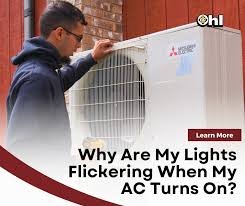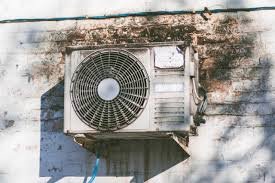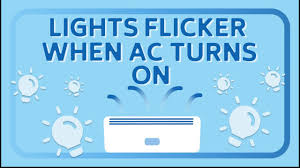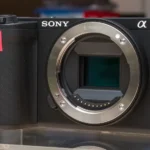Flickering lights can be quite an annoyance, especially when it happens every time your air conditioner kicks in. Understanding why this happens can help you address the issue and prevent potential electrical hazards. In this article, we’ll explore the reasons behind flickering lights when the AC turns on, how to diagnose the problem, and the steps you can take to fix it.
Understanding Electrical Load
Before diving into the causes, it’s crucial to understand the concept of electrical load. Electrical load refers to the amount of power consumed by devices and appliances in your home. When high-power appliances, like air conditioners, start up, they require a significant amount of power, which can affect the stability of your electrical system.
Role of High-Power Appliances
High-power appliances such as air conditioners, refrigerators, and microwaves draw a large amount of electricity when they start. This sudden demand can cause a temporary drop in voltage, leading to flickering lights. It’s similar to a surge of water pressure when multiple taps are turned on simultaneously.
Common Causes of Flickering Lights
Several factors can cause your lights to flicker when the AC turns on. We’ll now delve into the most common examples:
Inrush Current
When an appliance like an AC starts, it draws a large initial surge of current, known as inrush current. This surge can cause a brief dip in voltage, making your lights flicker momentarily.
Voltage Drop
Voltage drop occurs when there is a significant decrease in voltage in the electrical circuit. This can be due to high demand from the AC or other large appliances. Voltage drops are more noticeable in homes with outdated wiring or insufficient electrical capacity.
Loose Connections
Loose electrical connections can also cause flickering lights. These can occur at any point in the circuit, from the main panel to the outlet or fixture. Loose connections create resistance, which can result in intermittent power delivery and flickering lights.
Faulty Wiring
Faulty wiring can cause flickering lights. Wiring issues can cause inconsistent power flow and pose a fire hazard. It’s essential to ensure that your home’s wiring is up to code and in good condition.
Diagnosing the Flickering Issue
Initial Steps to Take
- Observe and Note: Keep track of when the flickering occurs. Does it happen only when the AC turns on, or are there other times?
- Inspect the AC Unit: Check if the AC unit itself is functioning correctly. Listen for any unusual noises or feel for loose parts.
- Check Other Appliances: Determine if other high-power appliances are causing similar issues.
Tools Needed for Diagnosis
- Multimeter: To measure voltage levels and detect drops.
- Screwdriver: For checking and tightening electrical connections.
- Circuit Tester: To ensure circuits are functioning correctly.
Professional vs. DIY Solutions

When to Call an Electrician
Persistent flickering or other electrical issues require a professional Electrician in New York. Call a licensed electrician to address the problem. They have the expertise to safely diagnose and fix complex problems. Consider professional help if:
- The flickering persists despite your efforts.
- You suspect faulty wiring or loose connections.
- You are unsure about handling electrical components safely.
Safe DIY Solutions
For minor issues, you might handle some troubleshooting yourself:
- Tighten Connections: Ensure all connections in the breaker panel and outlets are secure.
- Replace Old Wiring: If you are experienced, you can replace old, worn-out wiring sections.
- Install Surge Protectors: These can help manage inrush current and prevent voltage drops.
Preventing Flickering Lights
Regular Maintenance Tips
- Routine Inspections: Regularly inspect your electrical system for signs of wear or damage.
- Clean AC Filters: Keep your AC unit in good condition to reduce its power consumption.
- Balance the Load: Spread out the use of high-power appliances to avoid overloading circuits.
Upgrading Your Electrical System
Benefits of an Upgrade
For improved safety and convenience, consider upgrading your electrical system. This can provide benefits like:
- Improved safety and reduced risk of fire hazards.
- Increased capacity to handle modern appliances.
- Enhanced energy efficiency and reduced power bills.
How to Upgrade Safely
- Consult a Professional: Always consult with a licensed electrician before making significant upgrades.
- Use Quality Materials: Ensure that all materials used are up to code and of high quality.
- Plan for the Future: Consider future needs when planning your electrical system upgrade.
Energy-Efficient Solutions
Benefits of Energy-Efficient Appliances
Switching to energy-efficient appliances can help reduce the electrical load on your system. These appliances use less power, which can prevent flickering lights and lower your electricity bills.
How to Choose the Right Appliances
- Look for the Energy Star label: it signifies certified energy-efficient appliances.
- Consider Your Needs: Choose appliances that fit your usage patterns and household needs.
- Evaluate the Long-Term Savings: While energy-efficient appliances might cost more upfront, they can save money in the long run.
Smart Home Solutions
How Smart Technology Can Help
Smart home devices can help manage your electrical load more effectively. They can schedule high-power appliances to run at different times, monitor power usage, and alert you to potential issues.
Examples of Smart Home Devices
- Smart Thermostats: Control your AC more efficiently.
- Smart Plugs: Monitor and manage power consumption for individual appliances.
- Energy Monitors: Track overall power usage and identify potential issues.

Conclusion
Grasping the cause of flickering lights when the AC turns on is key to a safe and energy-efficient household. By recognizing the causes, diagnosing the problem, and implementing the right solutions, you can prevent flickering lights and ensure your electrical system runs smoothly. Whether through regular maintenance, upgrading your electrical system, or adopting energy-efficient and smart home solutions, there are many ways to address this common issue.
FAQs
Why do lights flicker when the AC turns on?
Lights flicker when the AC turns on due to a sudden surge in electrical demand, known as inrush current, which causes a temporary drop in voltage.
Is flickering lights dangerous?
While occasional flickering might not be dangerous, persistent flickering can indicate underlying electrical issues that should be addressed to prevent potential hazards.
Can I fix flickering lights myself?
Minor issues like tightening loose connections can be handled by homeowners, but persistent or complex problems should be addressed by a professional electrician.
How much does it cost to fix flickering lights?
The cost varies depending on the issue. Minor fixes might cost a few dollars, while more complex problems requiring professional intervention could range from $100 to $500 or more.
What appliances cause lights to flicker?
High-power appliances like air conditioners, refrigerators, and microwaves can cause lights to flicker due to their significant power draw during startup.









